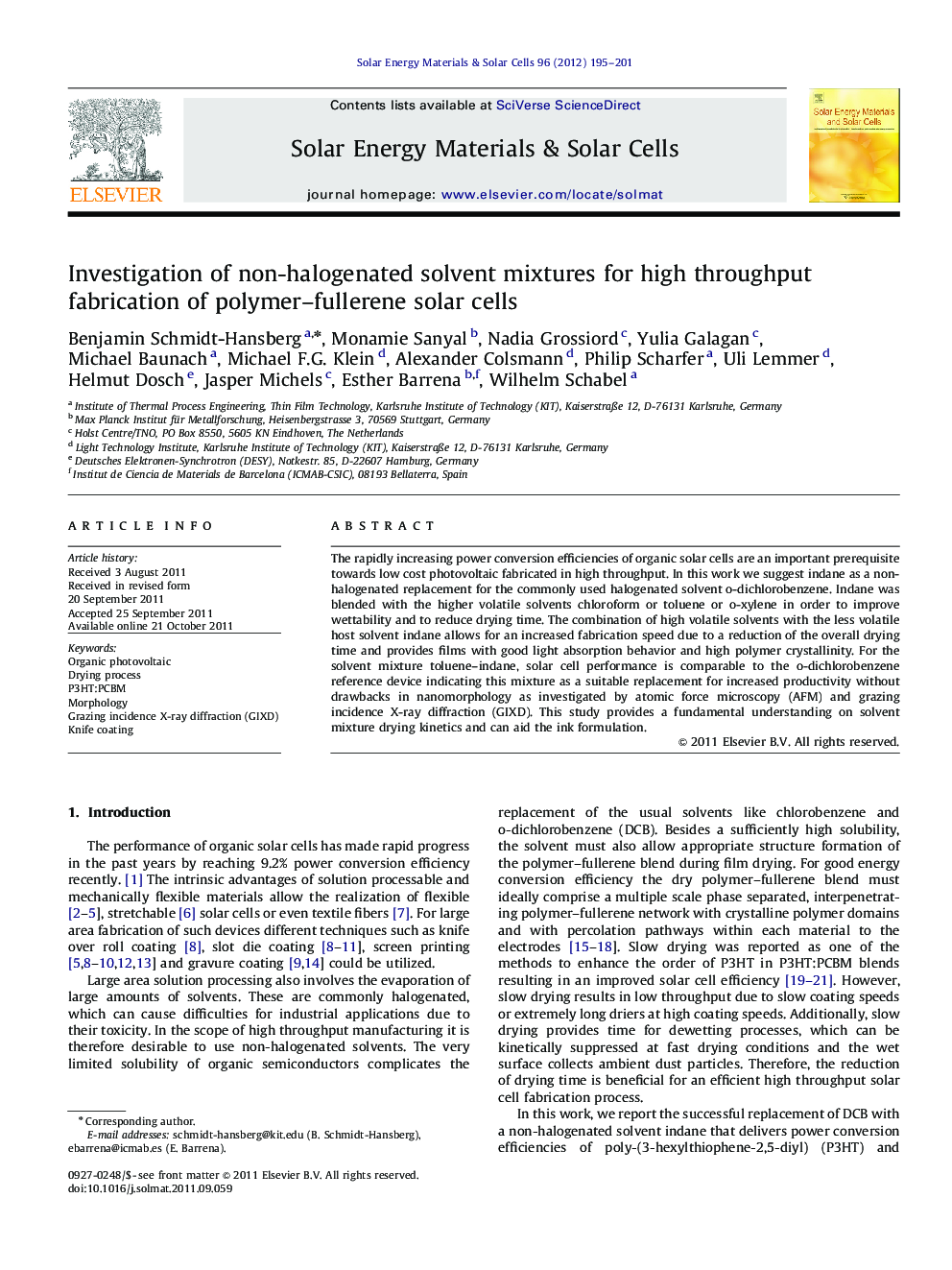| Article ID | Journal | Published Year | Pages | File Type |
|---|---|---|---|---|
| 79486 | Solar Energy Materials and Solar Cells | 2012 | 7 Pages |
The rapidly increasing power conversion efficiencies of organic solar cells are an important prerequisite towards low cost photovoltaic fabricated in high throughput. In this work we suggest indane as a non-halogenated replacement for the commonly used halogenated solvent o-dichlorobenzene. Indane was blended with the higher volatile solvents chloroform or toluene or o-xylene in order to improve wettability and to reduce drying time. The combination of high volatile solvents with the less volatile host solvent indane allows for an increased fabrication speed due to a reduction of the overall drying time and provides films with good light absorption behavior and high polymer crystallinity. For the solvent mixture toluene–indane, solar cell performance is comparable to the o-dichlorobenzene reference device indicating this mixture as a suitable replacement for increased productivity without drawbacks in nanomorphology as investigated by atomic force microscopy (AFM) and grazing incidence X-ray diffraction (GIXD). This study provides a fundamental understanding on solvent mixture drying kinetics and can aid the ink formulation.
Graphical abstractFigure optionsDownload full-size imageDownload as PowerPoint slideHighlights► Non-halogenated solvent mixtures for accelerated drying process. ► Improved light absorption and polymer crystallinity at reduced drying time. ► Toluene–indane delivers comparable performance to o-dichlorobenzene. ► Increased fabrication process throughput by comparable optoelectronic properties.
